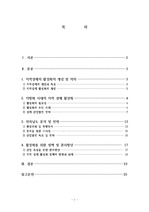

-
미리보기
서지정보
· 발행기관 : 한국중소기업학회
· 수록지 정보 : 중소기업연구 / 31권 / 2호 / 137 ~ 155페이지
· 저자명 : 박주영
초록
본 연구는 우리나라 유통산업환경의 경쟁이 날로 심화되고 있는 가운데 그간 대표적인 소매유통공간이면서도 1996년 유통시장개방 이후 급속하게 경쟁력이 약화되고 매출이 감소하고 있는 재래시장을 대상으로 상품구성이 재래시장의 활성화에 미치는 영향을 파악하여 효과적인 정책적 시사점을 제안하는 데 그 목적이 있다. 본 연구에서는 재래시장의 유형별로 활성화 수준을 결정하는 요인들을 파악하기 위해 결합회귀모델(Mixture Regression Model) 방법을 이용 하였다. 이 분석 모델은 재래시장의 업종비율을 예측변수로, 종속변수는 재래시장 유동고객 수로 설정하였다. 연구결과, 활성화 근린시장의 경우 축산물과 가정용품의 비중이 유동고객 수에 긍정적인 영향을 미치는 것으로 나타났고, 중소시장의 경우는 축산물과 가공식품의 비중이 상대적으로 유동고객 수의 증가에 중요한 역할을 하고 있음을 알 수 있었다. 학문적인 면에서 본 연구는 결합회귀모델 분석을 적용함으로써 기존의 방법론으로는 분석에 어려움이 있었던 세분 집단의 수의 결정, 모수 추정 등에 대해 보다 객관적인 자료를 제공함으로써 재래시장 활성화에 대한 보다 정확한 예측에 기여할 것으로 기대한다.영어초록
Usually, economic recession creates a momentum for the emergence of new retail format because consumers become more sensitive to prices because of their decrease in income. The financial crisis in 1997 provided a momentum for structural change in the retail industry from the late 1990s in Korea. As a new retail format, discount stores have rapidly grown in Korea. The financial crisis has caused fierce competition in the retail sectors in Korea. Although traditional markets (also called as conventional markets, open air market, or traditional wet market) have still major portions in Korean retail sector, it is clear that the sale of the traditional market has been decreasing drastically due to the growing penetration of discount stores into the retail sector. While the number of failing traditional markets has been added every year, some markets are doing very well. The purpose of this paper is to investigate a research question : “What makes differentiate successful markets from failing markets?” The research focuses on retail strategy as a starting point to solve the research question. The change in consumption is necessarily linked to a more competitive environment for the retail industry and thus likely to force the industry to try new strategies. The premise of this paper is that the traditional markets should adopt new strategy to obtain sustainable competitiveness. Development of a strategy defines for the store its business relative to its competitors. There are five dimensions of a retail strategy : location, merchandise, price, service, and communications. Each retailer should determine which dimensions will best serve its advantage by examining its own position relative to its competition. Although location strategy is the most important in retail strategy, it is very hard to apply location strategy unless the market is newly developed in a new location. Planning the merchandise mix is one of the most important aspects of operations. The merchandise a retailer carries defines the store for the customer. Thus, the study focuses on the merchandise strategy among retail strategies as a key factor for discriminating successful markets from unsuccessful markets. That is, the study proposes that successful markets have different merchandise compositions from those in unsuccessful markets. The study also attempts to develop strategic implications for traditional markets.
The study determines the successful market with the number of visitors to the market. The study assumes that the more customers visit the market, the more sales the market will make. The main dependent measure was the number of visitors of each market. The independent measures are the proportions of classified stores in the market. The observed stores are as follows : agricultural products, stock farm products, marine products, processed food, clothing, household goods, and restaurants. The observed number of classified stores is transformed into the proportions. The research attempts to investigate merchandise composition with the proportion of seven classifications of stores in four types of traditional market including neighborhood market, regional market, metropolitan market, and national market. The four types of traditional markets are classified mainly based on the size of trade area, that is, the travel distance of the customer. The neighborhood market’s trade area is a residence district where the market belongs to. The regional market’s trade area is a small city where the market belongs to. The metropolitan market’s trade area is metropolitan areas. The national market’s trade area is nationwide.
Data were collected from a total of 412 markets nationwide including 31 national markets, 47 metropolitan markets, 115 regional markets, 219 neighborhood markets. The average numbers of visitors are 2,214 for neighborhood markets, 2,282 for regional markets, 6,515 for metropolitan markets, and 3,554 for national markets. The average travel distances are 0.91Km for neighborhood markets, 5.28Km for regional markets, 7.93Km for metropolitan markets, and 14.54Km for national markets.
Although the correct number of segments is crucial, the proper number of segments is unknown in real-world applications. Mixture regression models have recently received attention from both academics and practitioners due to their considerable potential for the solving this problem. The research has undertaken empirical research using the methodology of a mixture regression modeling in order to investigate merchandise compositions in markets. The analysis procedures are as follows : First, the research used mixture model to discriminate successful markets from unsuccessful markets. Then, the research used mixture regression model to identify merchandise compositions. That is, the research constructed a mixture regression model using the proportions of merchandise categories as explanatory variables and the number of visitors as a dependent variable. The results show that competitive markets have different proportions in merchandise categories from those found in less competitive markets.
The Results are summarized as follows :
First, 50% is unsuccessful, 45.6% is successful, and 4.4% is very successful in neighborhood markets. The average number of visitors in the unsuccessful neighborhood market is 667, while the number of visitors is 2,889 in the successful market and 12,689 in the very successful market. The proportions of farm stock products and household goods are high in the successful neighborhood markets.
Second, 76.2% is unsuccessful, 18.4% is successful, and 5.4% is very successful in regional markets. The average number of visitors in the unsuccessful regional market is 1,218, while the number of visitors is 4,178 in the successful market and 13,481 in the very successful market. The proportions of farm stock products and processed foods are high in the successful neighborhood markets.
Third, 73.7% is unsuccessful and 26.3% is successful in metropolitan markets. The average number of visitors in the unsuccessful metropolitan market is 2,402, while the number of visitors is 17,914 in the successful market. Since the number of visitors in the successful markets is 8 times to that of unsuccessful markets, there is a notably huge difference between unsuccessful and successful metropolitan markets. Fourth, national markets failed to be divided into successful and unsuccessful groups due to small samples.
Based on the research results, political implications are as follows :
First, government supports for traditional markets have previously focused on facility improvement. For renewed markets expect that they can attract more customers with some efforts in better service and more promotion. However, renewal in merchandise in the market is essential to attract customers continuously. Thus, it is recommended that renewal both in facility and merchandise be executed simultaneously.
Second, the research found that different types of traditional markets should have different merchandise compositions. Neighborhood markets are recommended to increase the portion of farm stock products and household goods. Regional markets are recommended to increase the portion of farm stock products and processed foods.
Third, while the half of neighborhood markets is successful, most regional markets and metropolitan markets are depressed. Thus, government supports should concentrate more on these regional and metropolitan markets.참고자료
· 없음태그
-
자주묻는질문의 답변을 확인해 주세요

꼭 알아주세요
-
자료의 정보 및 내용의 진실성에 대하여 해피캠퍼스는 보증하지 않으며, 해당 정보 및 게시물 저작권과 기타 법적 책임은 자료 등록자에게 있습니다.
자료 및 게시물 내용의 불법적 이용, 무단 전재∙배포는 금지되어 있습니다.
저작권침해, 명예훼손 등 분쟁 요소 발견 시 고객센터의 저작권침해 신고센터를 이용해 주시기 바랍니다. -
해피캠퍼스는 구매자와 판매자 모두가 만족하는 서비스가 되도록 노력하고 있으며, 아래의 4가지 자료환불 조건을 꼭 확인해주시기 바랍니다.
파일오류 중복자료 저작권 없음 설명과 실제 내용 불일치 파일의 다운로드가 제대로 되지 않거나 파일형식에 맞는 프로그램으로 정상 작동하지 않는 경우 다른 자료와 70% 이상 내용이 일치하는 경우 (중복임을 확인할 수 있는 근거 필요함) 인터넷의 다른 사이트, 연구기관, 학교, 서적 등의 자료를 도용한 경우 자료의 설명과 실제 자료의 내용이 일치하지 않는 경우
“중소기업연구”의 다른 논문도 확인해 보세요!
-
기업생태계관점에서의 연구개발 전략과 플랫폼 리더십 : 대․중소기업 상생협력과 R&D에의 시사 19 페이지
플랫폼이란 ‘나홀로(stand alone)'개발의 상대적 개념이다. 즉 플랫폼이란 비즈니스의 파트너들과 인터페이스들의 핵심자역할을 통해 가치를 창출하고 문제를 해결하게 한다. 플랫폼을 기반으로 생태계의 구성원들이 유기적으로 조합되게 되며, 공통의 인터페이스 집합이 이루어 지면서 기업생태계가 구성되게 된다. 본 연구는 이런 점에 착안하여 중소기업의 연구활동이.. -
企業家活動과 일자리 창출에 대한 실증분석 22 페이지
본고는 기업가의 창업활동과 고용간의 관계를 우리나라의 지역별 자료(7대 광역도시와 9개 도지역)를 대상으로 시초로 실증분석 하였다. 실증분석 결과를 다음과 같이 요약할 수 있다. 첫째, 실증분석 결과 우리나라에서도 미국, 영국 및 독일 등과 같이 기업가의 창업활동이 고용창출에 긍정적으로 기여하고 있음이 확인되었다. 또한 창업활동 과정에 대한 동태적인 효과.. -
The Challenge of Pandora TV : The Growth Momentum and Global Expansion.. 25 페이지
The purpose of this study is to analyze how Pandora TV became market leader in the domestic market and how Pandora TV has managed its global expansion. This study draws outline of online contents mark..
찾으시던 자료가 아닌가요?
지금 보는 자료와 연관되어 있어요!
문서 초안을 생성해주는 EasyAI



